Inspur NE5260M5 Performance
At STH, we have an extensive set of performance data from every major server CPU release. Running through our standard test suite generated over 1000 data points for each set of CPUs. We are cherry-picking a few to give some sense of CPU scaling.
As a quick note here, our test configuration came with dual Intel Xeon Gold 8260 CPUs. We are going to keep the platform CPU comparison on pre-refresh SKUs, however, the 2nd Gen Intel Xeon Scalable Refresh SKUs may be better options at this point in the product cycle.
Python Linux 4.4.2 Kernel Compile Benchmark
This is one of the most requested benchmarks for STH over the past few years. The task was simple, we have a standard configuration file, the Linux 4.4.2 kernel from kernel.org, and make the standard auto-generated configuration utilizing every thread in the system. We are expressing results in terms of compiles per hour to make the results easier to read.
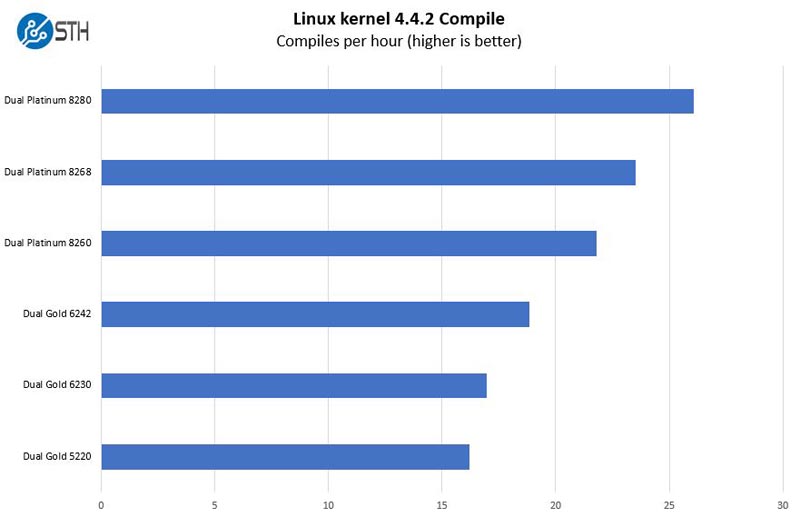
Many buyers will focus on the lower-end of the Xeon Gold line such as the Intel Xeon Gold 5220 or newer Intel Xeon Gold 5220R SKUs. Again, we are looking at pre-refresh SKUs here but many of these CPUs have refresh equivalents as we saw in our recent Intel Xeon Gold 6258R Review.
c-ray 1.1 Performance
We have been using c-ray for our performance testing for years now. It is a ray tracing benchmark that is extremely popular to show differences in processors under multi-threaded workloads. We are going to use our new Linux-Bench2 8K render to show differences.
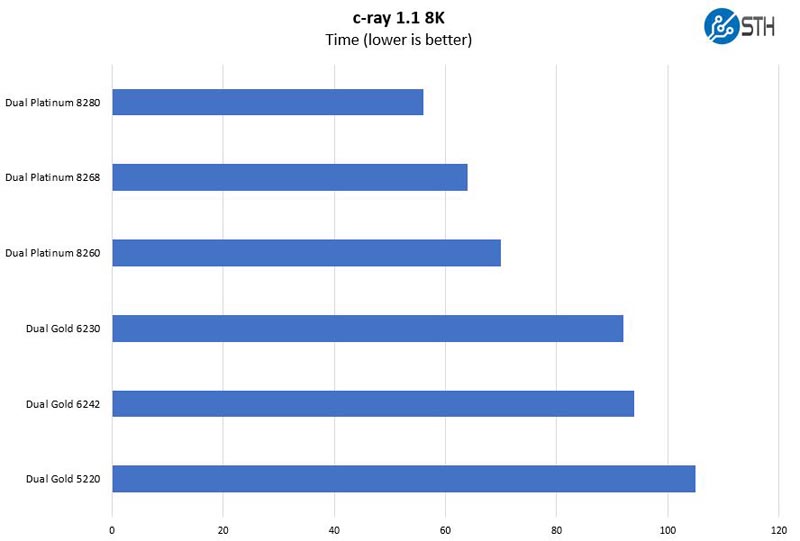
Here, we see the Intel Xeon Gold 6242 solution is providing a lot of performance even with fewer cores. The NE5260M5 will likely run fewer traditional per-core licensed applications. If that is a consideration, then there are options in the Xeon stack. We also recently reviewed the Intel Xeon Gold 6250 designed for frequency optimized configurations.
7-zip Compression Performance
7-zip is a widely used compression/ decompression program that works cross-platform. We started using the program during our early days with Windows testing. It is now part of Linux-Bench.
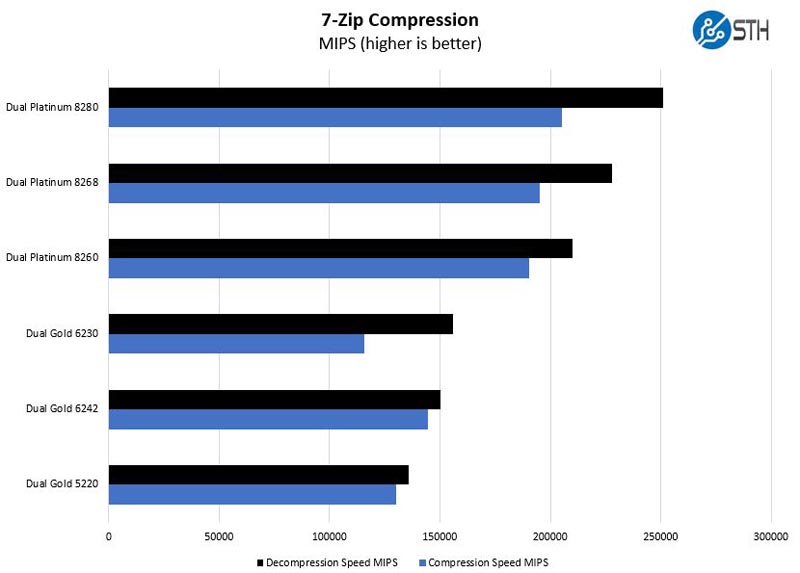
Here the Intel Xeon Platinum 8260 performs extremely well. If looking to the refresh equivalent, one would look to the Intel Xeon Gold 6240R which is the same price but offers 33% more cores than the Intel Xeon Gold 6240 making it a better value.
OpenSSL Performance
OpenSSL is widely used to secure communications between servers. This is an important protocol in many server stacks. We first look at our sign tests:
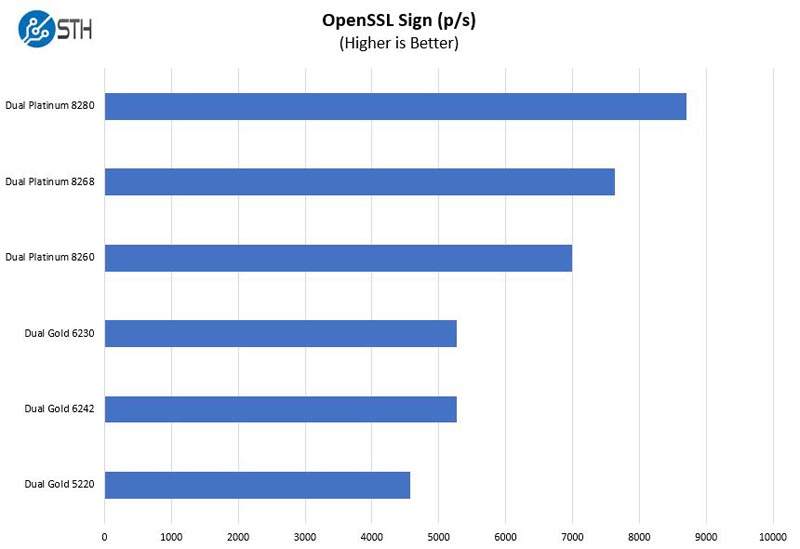
Here are the verify results:
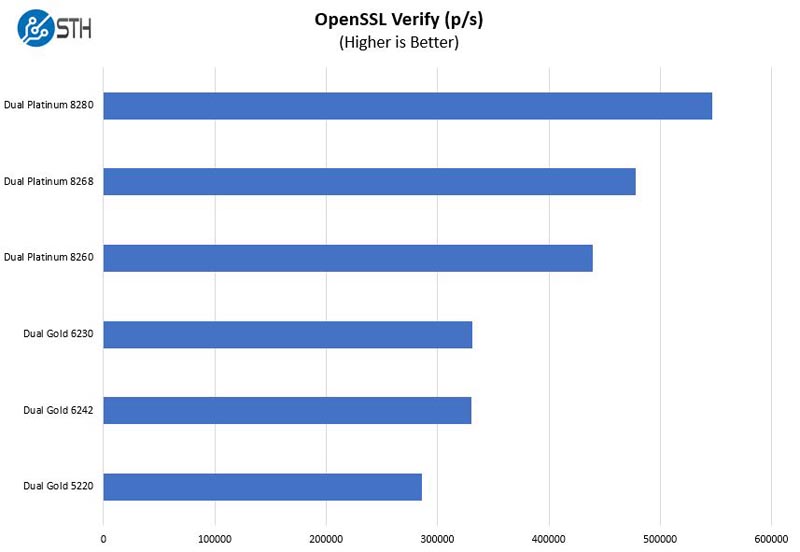
Here we wanted to note that we are not using Intel QAT acceleration. This system can utilize the Intel C622 non-QAT enabled PCH or the C627 QAT enabled PCH. At STH we did a series with Intel QuickAssist Technology and OpenSSL: Benchmarks and Setup Tips as well as Intel QuickAssist at 40GbE Speeds: IPsec VPN Testing on the technology. Intel is continuing down the path of offering QAT and industry integrations are getting better. Using QAT here would largely make CPU performance irrelevant as the functionality would mostly be on the QAT accelerator.
Chess Benchmarking
Chess is an interesting use case since it has almost unlimited complexity. Over the years, we have received a number of requests to bring back chess benchmarking. We have been profiling systems and are ready to start sharing results:
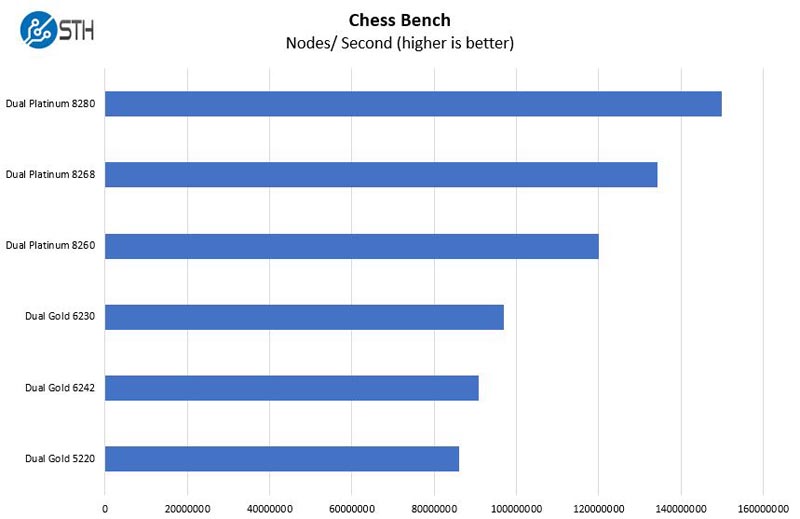
Being able to handle 205W TDP CPUs means that the NE5260M5 can scale to the Intel Xeon Platinum 8280 and refresh parts such as the Intel Xeon Gold 6248R. Not all short-depth 2U systems can support full 205W TDP CPUs so this is a big differentiator.
GROMACS STH Small AVX2 Enabled
In Linux-Bench2 we are using a “small” GROMACS test for single and dual-socket capable machines. Our GROMACS test will use the AVX-512 and AVX2 extensions if available.
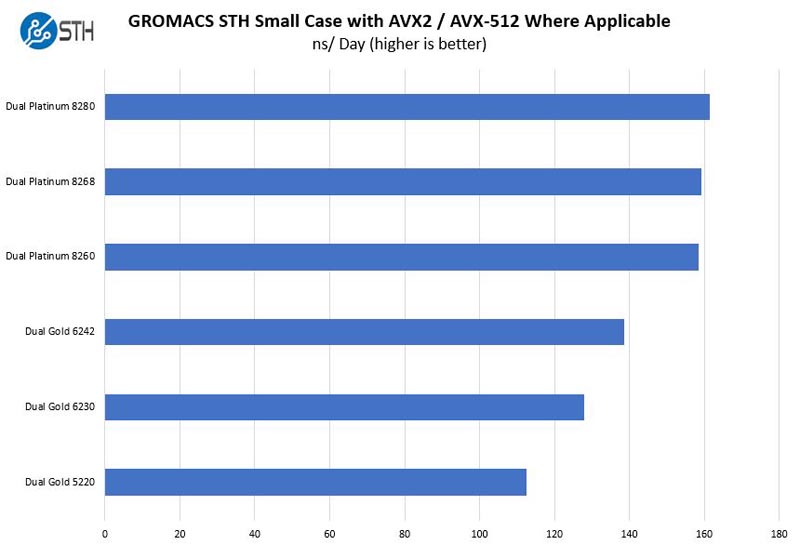
The large fans in the system were able to keep the processors cool even under AVX-512 workloads known to push power consumption and heat dissipation levels in servers.
Next, we are going to move onto the Inspur NE5260M5 power consumption, the STH server spider, and our final words.




We’re looking to deploy this form factor in 2021. It’s great that STH is reviewing this class of system.
Hello, I’m the EE of this SEVER, It also have several SKUs to support 6 Bays of 2.5” NVMe SSDs, or 4 Bays NVMe + 2 Bays SATA , or 2 Bays NVMe + 4 SATA, just let readers to know , thanks!